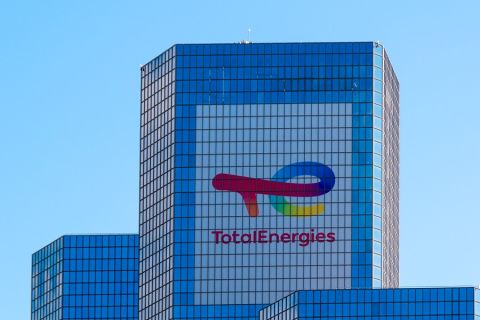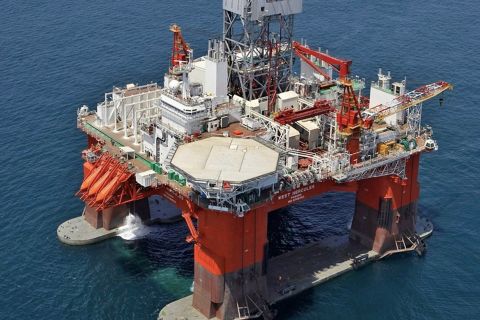
Occupational safety has improved greatly in recent years. DNV GL’s analysis of data from companies’ annual and sustainability reports shows a tenfold reduction in reportable incidents per 200,000 man-hours during the last 20 to 30 years when lost-time injuries are excluded.
Occupational safety is monitored using common industry metrics, is included in company annual reports and receives board-level attention. However, while occupational safety (as measured by reportable incidents) has improved in general, major accidents and nearmisses still happen, and the rate at which they occur is not significantly dropping.
More could be done to reduce the risk of these occurring. The industry should strive to learn and share more from what is successful in major accident management. In other words, the industry should not just study failures—it also should learn more from its successes.
Analysis of the EU major accident report system and the U.S. Environmental Protection Agency risk management plan-star (RMP-Star) databases shows a steady frequency of major accident events and no reduction in their level of severity. Similarly, insurance brokerage firm Marsh & McLennan examined insurance claims for property damage losses in the hydrocarbon industry between 1974 and 2013 and found no clear reduction since 1994.
Statistics from the Country Performance Project of the International Regulators Forum (IRF) for Global Offshore Safety also supports this picture. Fatalities per million hours worked from 2008 to 2012 do not show a unified trend toward global improved performance. Against this backdrop of industry data, DNV GL decided to take a new look at what an enhanced risk management regime should look like.
Global/local challenge
Social, political and economic frameworks for regulation vary considerably worldwide and might evolve in different directions with varying levels of prescriptive or risk-based requirements. Oil and gas companies operating globally must therefore not only increase oversight where requirements are less developed but also proactively align global operating standards and procedures toward unique local regulatory changes. This is particularly true for those operators based in EU countries who are now required to produce a Major Accident Prevention Policy, which the EU deems to be applicable to their global operation and not just those within the EU.
In its report, “Regulatory outlook: The way forward for offshore regulatory safety regimes,” DNV GL has assessed offshore regulatory frameworks in Mexico, Brazil, the EU, Angola and Australia. It also covers the Arctic from an international regulatory perspective as well as nationally for the U.S., Canada, Greenland, Norway and Russia.

Gauging the path of regulation
The case studies in the report are regional high-level summaries of offshore oil and gas activities, with a particular focus on regulatory safety regime status and possible developments.
Each case study is divided into two parts: a background and an outlook. The background summarizes historic developments up to the present day and was assembled mainly through research of publicly available information. The outlook suggests possible future evolution and was produced through a combination of research, workshops and internal interviews with DNV GL experts and customers worldwide.
Possible scenarios are discussed for regulatory developments in these jurisdictions, and these scenarios are mapped to DNV GL’s safety model to identify key factors that could help reduce major accident hazards in each region.
Four fundamental scenarios for the development of regulatory regimes are analyzed:
• Global safety: Each major accident in the industry is reviewed and learned from globally by both industry players and regulators;
• New moral imperative: Governments recognize society’s unwillingness to tolerate major accidents, so operators’ responsibility for safety is increased;
• Operators’ rule: Governments are reluctant to improve their regulatory capability and rely on operators’ global experience; and
• Local safety: Regulators focus on improving their own safety regimes.
These scenarios correspond to varying degrees with current offshore regulatory regimes and are not intended as accurate illustrations of the future. However, they are a useful starting point for discussing how safety regimes should develop, particularly when used in conjunction with DNV GL’s safety model.
This incorporates six interconnecting performance levers and dependencies which, if recognized, should lessen the probability of a major accident occurring. In no particular sequence, these are:
• Existence of performance-based regulations and independent verification;
• Clear roles and responsibilities for safety, including ensuring that stakeholders share common goals;
• Information sharing from monitoring safety performance;
• Advanced barrier management that includes mitigating as well as preventive barriers;
• Stakeholder access to a tool that records up-to-date risk identification and provides a complete view of risk exposures for an asset, asset cluster, project or company; and
• Interaction between people, technology and the organization.
A global safety scenario, where each major accident is reviewed and lessons learned by all regulators and industry players, includes many elements of DNV GL’s preferred approach. This scenario also envisages large fines for major accident hazards and harmonization of HSE regimes to reduce compliance costs and administration.
The importance of sharing lessons learned locally and globally should be further emphasized. In this respect, the IRF, along with industry bodies such as the Norwegian Oil and Gas Association, American Petroleum Institute, International Association of Drilling Contractors and the classification societies, take an active role in sharing information and trends that in turn help improve global safety. The new International Association of Oil & Gas Producers 456 Recommended Practice on process safety is another recent example of such collaborative efforts. All such efforts are to be commended.
Ultimately, it must also be recognized that the management of major accident risk makes sound business sense.
While the focus must of course be on the safety and environmental impact of such risks, one should not underestimate or ignore the business risk impact of major accident events. Actively managing safety and environmental risk is an investment that is clearly beneficial to the health of the business overall.
Recommended Reading
E&P Highlights: March 4, 2024
2024-03-04 - Here’s a roundup of the latest E&P headlines, including a reserves update and new contract awards.
Tyra Redevelopment Heading for Production in March
2024-02-28 - TotalEnergies said the Danish North Sea project will take about four months to ramp up and is expected to produce 2.8 Bcm/year.
E&P Highlights: March 15, 2024
2024-03-15 - Here’s a roundup of the latest E&P headlines, including a new discovery and offshore contract awards.
US Drillers Add Oil, Gas Rigs for Second Week in a Row
2024-01-26 - The oil and gas rig count, an early indicator of future output, rose by one to 621 in the week to Jan. 26.
Second Light Oil Discovery in Mopane-1X Well
2024-01-26 - Galp Energia's Avo-2 target in the Mopane-1X well offshore Namibia delivers second significant column of light oil.




